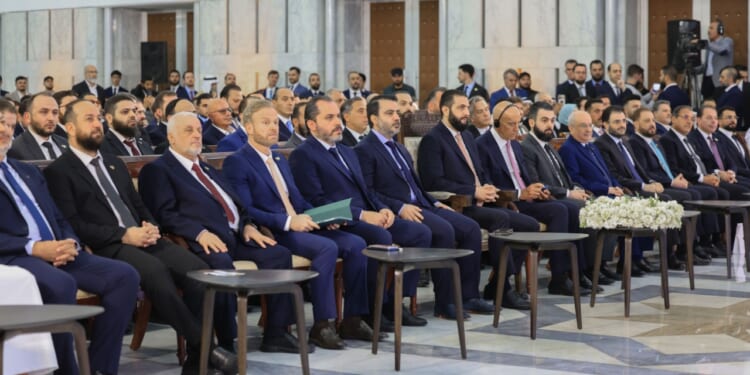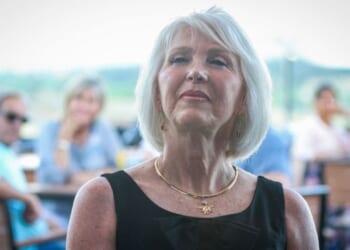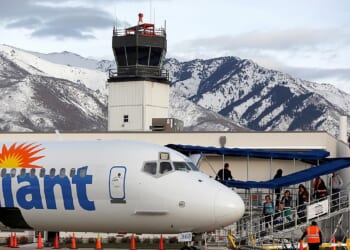A more integrated Middle East is also a Middle East more open to connections with neighboring regional powers.
On Tuesday, September 23, President Donald Trump met with leaders of several key Arab states. The countries were attending the United Nations General Assembly. At the meeting, the Trump administration presented a 21-point peace plan aimed at ending the war in Gaza. This has been an essential agenda item for the White House since the administration came into office in January. However, its various initiatives have proved unsuccessful in bringing the 23-month war to a conclusion. This may change as states in the Middle East step up and reconsider their own foreign policies.
The Middle East remains a pivotal region. This was clear enough during the Cold War and the Global War on Terror. Nonetheless, the US regional strategy has sought to shift from fighting terrorism and insurgencies to competing with and confronting “near-peer” adversaries such as Russia and China.
As US priorities shift, US partners and allies in the Middle East are stepping up to fill any potential security vacuums. However, the case of the Gaza War indicates that regional powers like Saudi Arabia still face hurdles in brokering outcomes to conflicts and crises on their own. This is not just due to Saudi non-recognition of Israel, since the UAE and Bahrain, which have normalized ties, were not able to end the war either. Egypt, which sought to aid mediation efforts alongside Qatar, has also met with little success.
The Hamas attack on Israel on October 7, 2023, set in motion a destructive and transformative regional war. Iranian-backed proxies in Lebanon, Iraq, and Yemen attacked Israel using rockets and drones. Iran and Israel also fought each other directly, twice in 2024 and then over 12 days in June of 2025. Iran has suffered setbacks in all of these clashes. Iranian allies such as Hezbollah have been badly mauled and lost their senior leadership. The Assad regime in Syria, a key Iranian and Russian ally, also collapsed on December 8, 2024.
The shifting fortunes in Damascus now symbolize how the region is changing. Syria’s interim president, Ahmed al-Shara, traveled to New York for the UN General Assembly this week. He held numerous meetings with key leaders, including the presidents of Turkey and Ukraine, as well as a brief meeting with President Donald Trump. It’s not the first time he has met Trump; they also met in May when the US president flew to Saudi Arabia.
While Shara still faces challenges at home, the fact that he has been able to shake off Syria’s pariah status and bring the country back in from the cold illustrates how hungry countries are for change in the Middle East. Syria was a divided country during its civil war from 2011 to 2024. The Assad regime was also a feature of the landscape in the region for 50 years. Now, like Saddam Hussein, Muammar Gaddafi, and other twentieth-century dictatorial holdovers, it has collapsed for good.
These winds of change have not only empowered Syria. They have also empowered the new leadership in Lebanon. Additionally, Egypt has conducted new outreach efforts. It has completed a naval drill with Turkey, marking a significant step in repairing two decades of strained relations. It is also pushing for peace in Gaza. Meanwhile, Saudi Arabia has signed a new defense treaty with Pakistan.
A similar trend can be observed in the Gulf Cooperation Council. After an Israeli airstrike on a Hamas meeting in Qatar in September, the Gulf countries expressed a desire to increase defense cooperation. They appear concerned that, despite large investments in US defense systems, they have relied too much on the American umbrella over the years without adequate protection.
This all points in one clear direction. The Global War on Terror weakened some of the Arab states. Iraq was torn apart by an insurgency and then the rise of ISIS. After ISIS was defeated in 2018, Iranian-backed militias sought to fill the vacuum within the Iraqi state, as it lurched from one crisis to another.
Although there have been some recent positive developments, such as the release of Princeton University researcher Elizabeth Tsurkov by Kataib Hezbollah and the autonomous Kurdistan region resuming oil exports, the country is still in the process of stabilizing. Syria and Lebanon also face similar hurdles. In addition, Yemen and Libya continue to be divided by ongoing civil wars.
The regional trend toward outreach suggests that Arab leaders are seeking to strengthen defense ties and expand their military and economic relationships with countries further afield. These will likely include Turkey, which is investing heavily in Syria, and Pakistan, which can marshal a powerful military and nuclear arsenal. It could also involve countries in non-Western economic blocs such as BRICS and the China-led Shanghai Cooperation Organisation.
It will also involve investment in the India-Middle East-Europe Economic Corridor, which stretches from India to Europe. The historic Hejaz railway, which runs from Saudi Arabia to Turkey, may soon be revived, creating a north-south economic corridor. All signs point to a new, more integrated era following decades of chaos, civil war, and terror.
About the Author: Seth Frantzman
Seth Frantzman is the author of Drone Wars: Pioneers, Killing Machines, Artificial Intelligence and the Battle for the Future (Bombardier 2021) and an adjunct fellow at The Foundation for Defense of Democracies. He is the acting news editor and senior Middle East correspondent and analyst at The Jerusalem Post. Seth has researched and covered conflict and developments in the Middle East since 2005 with a focus on the war on ISIS, Iranian proxies, and Israeli defense policy. He covers Israeli defense industry developments for Breaking Defense and previously was Defense News’ correspondent in Israel. Follow him on X: @sfrantzman.
Image: Mohammad Bash / Shutterstock.com.

















